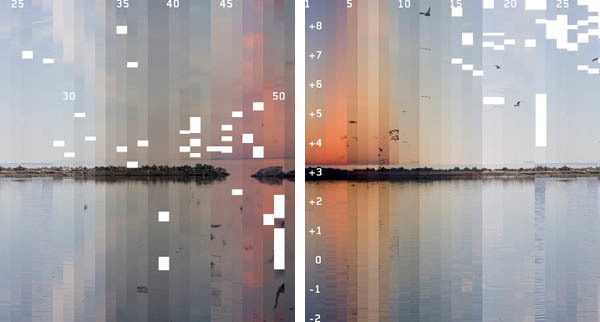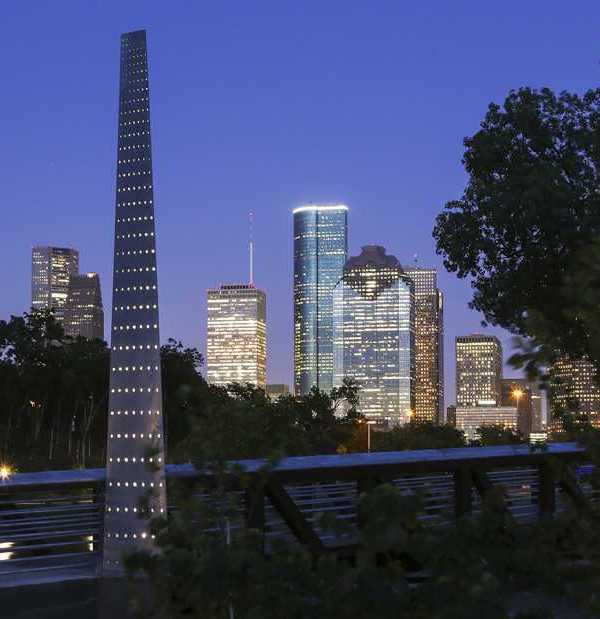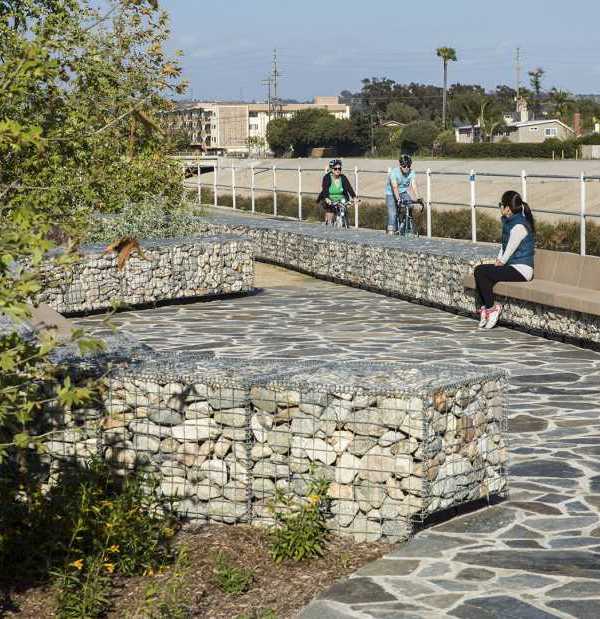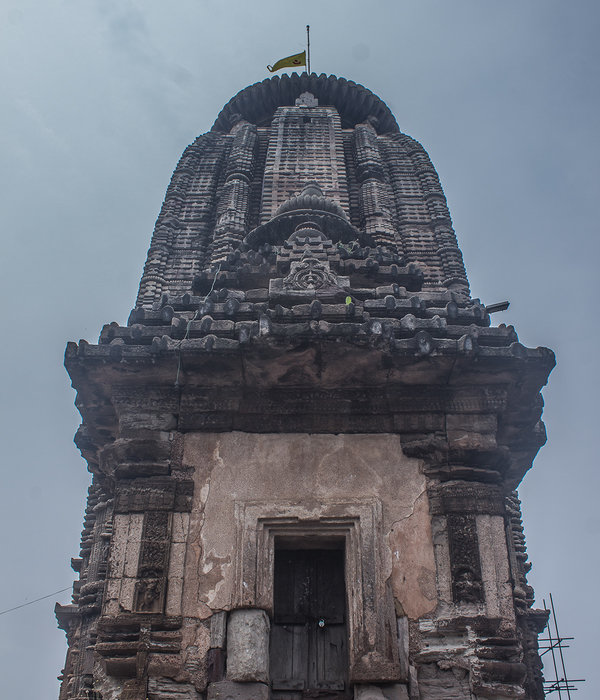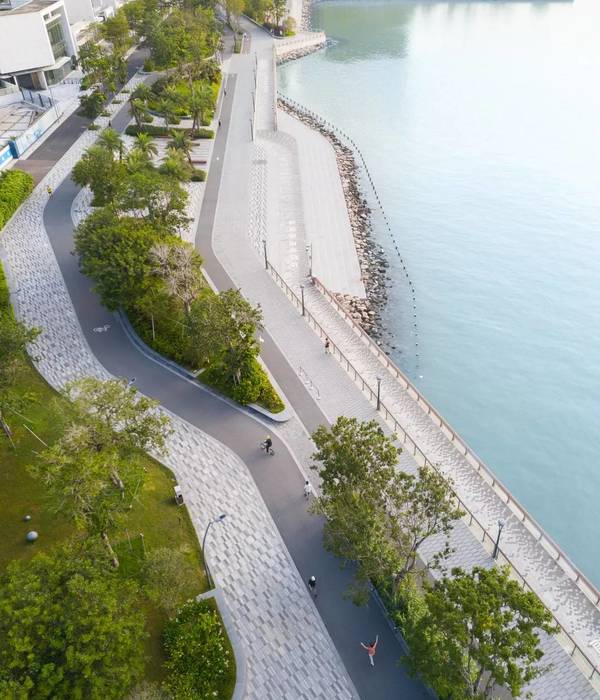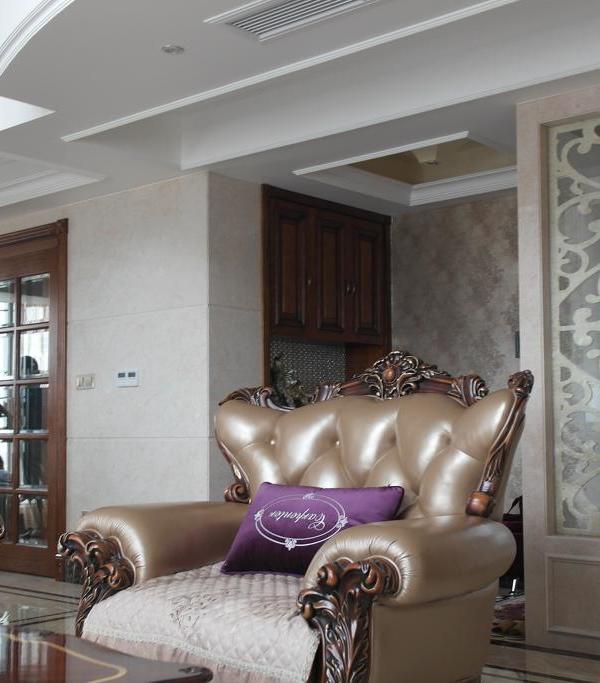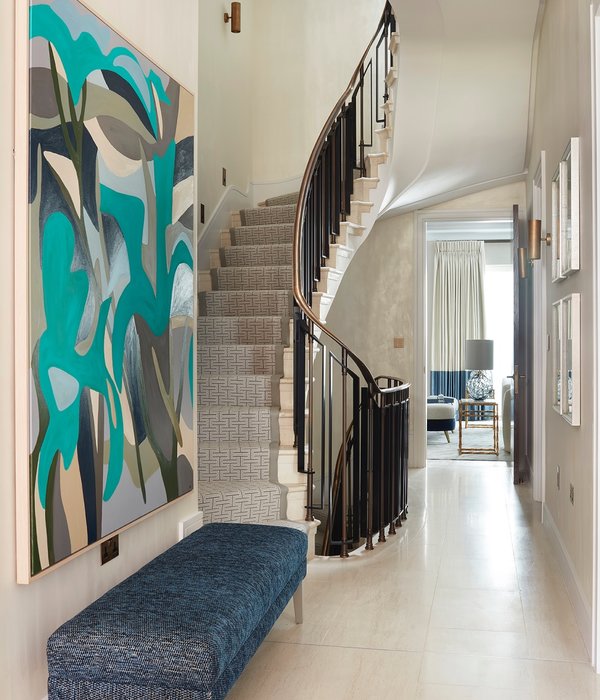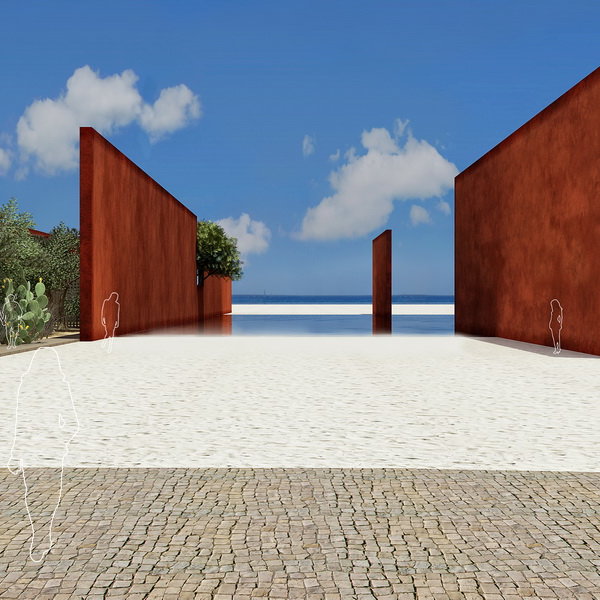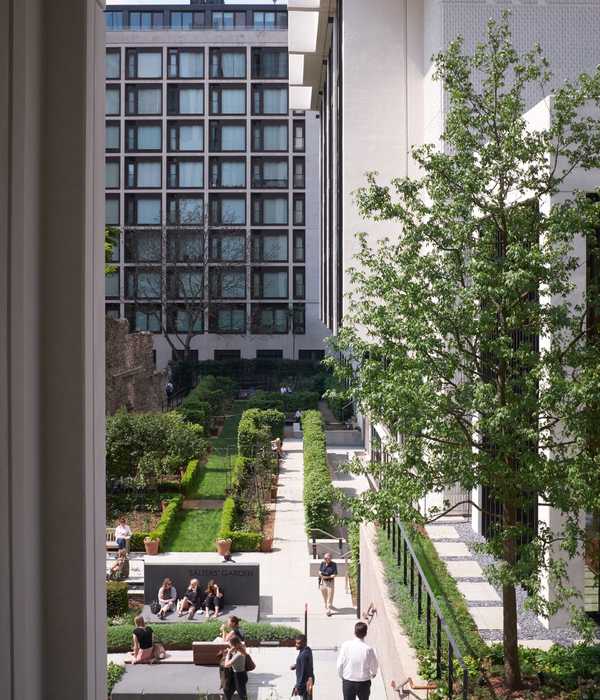“这是一个非凡的神圣场地,它的简单与克制彰显了自身的宝贵价值。伊魁特墓园展现了对先辈的尊重。面对如此美丽的景观,尽可能地减少干预就是最好的做法。” – 2018年评奖委员会
“The power of the place is extraordinary, and the decision to keep it simple and subdued is brilliant.The place honors the community’s ancestors. There are certain times when you’re working with a landscape that’s so beautiful, the best thing to do is as little as possible.” – 2018 Awards Jury
伊魁特市政公墓改变了人们对传统公墓的认知。通过对自然环境和当地文化元素进行巧妙结合,该项目创造了一个充满活力的社区空间,在突显北极景观的同时也对这里的居民表达了敬意。有机的设计充分挖掘了贫乏的土地所蕴藏的美感,呈现出一种独一无二的极简魅力。具有强烈几何感的路径在大雪之下依然清晰可见,将来访者引向一个由弓头鲸颌骨打造的、拱形的仪式空间。这一简单却引人注目的设计在尊重当地传统的基础上使天然材料与人造文物融为一体。整个项目的推进过程充分考虑了当地的环境价值,旨在为北极的苔原景观提供保护,同时对永久冻土带的变化进行良性干预。伊魁特市政公墓项目犹如一场意味深长的叙述,它促使我们去了解并尊重过去的历史与景观,以及那些已经逝去和依然健在的人们。
The Iqaluit Municipal Cemetery has transformed the community’s perception of what a cemetery can and should be. Drawing on local and traditional knowledge, the thoughtful combinations of natural materials and indigenous cultural elements create a dynamic community space where the arctic landscape and its peoples are remembered and celebrated. With an organic design that embraces the beauty of sparseness, the simplicity of this design is what creates its magic. A strong geometry of pathways, visible even under the snow, leads to a ceremonial gathering space framed by an arch of bowhead whale jaw bones. Striking but simple forms honour indigenous traditions, using a juxtaposition of natural materials and artifacts. Environmental values underpin the design approach with a customized operations plan to preserve the tundra and manage changes in permafrost. The cemetery makes an eloquent statement, a blending of time, honouring those that have passed with the current landscape and the people that live within it.
▲场地平面图,site plan
伊魁特市政公墓位于加拿大努勒维特,于2014年10月向公众开放。在该项目中,以景观设计师为主导的多学科团队在多方面进行了合作,包括选址、设计、施工和运营管理等。项目团队还与地方议会以及德高望重的因纽特长者进行了密切合作,以确保公墓的设计能够充分地尊重因纽特人的文化以及它们与这片土地的联系。公墓坐落在一块三英亩的场地上,整个设计在实现无障碍通行的同时还为场地中的脆弱土壤提供了保护,并且满足了公众希望使墓园朝向大海的愿望。
项目初期需要解决的问题包括:如何在不破坏脆弱的北极苔原的前提下使墓地发挥作用?如何将墓园打造为一个具有包容性的社区空间?在气候变化的影响下,如何保证墓园拥有高度的使用弹性?
设计团队从传统文化和知识入手,采用了能够凸显当地文化内涵的材料和形式。风化的巨石构成了具有强烈几何感的路径,在大雪之下依然清晰可见。为了使人们能够轻松地步行至墓园内部,轴心路径直接将来访者引入一个由弓头鲸颌骨打造的、拱形的仪式空间。从中央区域开始,巨大的骨骼框出壮观的海景,一方面象征着此世与彼世的连接,一方面也表达了对本土猎人的尊敬。
墓园的纪念墙由具有现代感的耐候钢板与天然的材料和人造文物构成。随着时间的推移,钢板的锈迹将在海风的作用下变得更加生动,同时映射出北极光与极地柳的颜色。凭借着高度的文化敏感性,伊魁特市政公墓不仅仅是一处能够象征当地传统且内涵丰富的景观,它同时还承担着社区的功能,为生活在这里的人们提供用于纪念和庆祝的开放场地。
环境价值构成了设计手法的根本依据,其内容涉及到埋葬区的布局和规划,以确保脆弱的苔原景观能够继续维持下去。除了基本的功能区域之外,景观设计团队还特别制定了一套运营和管理方案,以便在保护苔原的同时对永久冻土带的变化进行良性干预。在施工过程中,道路上的表层植被均经过了谨慎的修剪和维护,并被移植到已经受到破坏的区域。到了夏末时节,施工结束之后,苔原上已经长出了茂密的绿草。
在公墓建成之后,设计团队依然保持着对项目的关注,新研发的操作程序要求维护人员和管理人员应及时地学习新技能并获得新的通信协议。在夏季,气温的升高会导致永久冻土带的季节性波动,因此墓地的使用时间需要被缩短。墓园的新型管理办法要求参与埋葬的人员彼此进行有效的沟通,包括向社区居民解释苔原应当在何时以何种方式被替换为埋葬用地。在埋葬工作结束后,维护人员还将继续对苔原植被进行恢复。这一做法不仅体现了管理者的认真谨慎,同时也提高了社区居民在保护苔原景观方面的参与度和自豪感。
如今,市民们对伊魁特公墓频繁且多样化的使用充分表明了传统公墓的固有形象已被打破。伊魁特市长也表示“十分感谢设计团队创造了一座如此尊重本地环境的墓园。”伊魁特市政公墓已不仅仅是一个纪念性的场所,它还是一处重要的公共开放空间,在激活当地社区的同时充分保护并突显了珍贵的北极景观。
▲地理位置示意,context plan
▲墓园入口处耸立的石碑和用耐候钢制成的大门,Upstanding stone pillars and a weathering steel gate mark the cemetery entrance
▲门闩处融入了因纽特人的符号,向来访者展示出迎接的姿态,The gate latch incorporates Inuit symbols, welcoming visitors to the site
▲随着时间的推移,钢板的锈迹将在海风的作用下变得更加生动,Rust colours of the weathering steel memorial wall are animated over time by the salty air
▲光线从钢墙的孔径中穿过,象征着北极光,Light passes through perforations in the steel wall, symbolic of the northern lights
▲雪地里的巨石构成了强烈的几何形状,界定出路径和埋葬地点,A hierarchy of boulders creates a strong geometry under snow, defining pathways and burial sites
▲中轴线将来访者引向一个由弓头鲸颌骨打造的拱形空间,The central axial pathway terminates at an archway of standing bowhead whale jaw bones
▲巨大的骨骼框出壮观的海景,象征着此世与彼世的连接,The whale bone arch anchors and frames the view towards the ocean, symbolizing the afterlife
▲道路上的表层植被均经过了谨慎的修剪和维护,随后被移植到已经受到破坏的区域,Tundra on the roads was carefully cut and salvaged, and later replaced over disturbed areas
▲社区成员参与公墓开放仪式,Opening day with members of the community
▲墓园中的纪念仪式,A ceremony is held within the cemetery
▲重新种植的苔原在早秋时节呈现出生机勃勃的景象,Success of the re-vegetation effort shown in the tundra’s early fall colours
▲墓园的步道加强了其作为公共开放空间的作用,Residents utilize the site’s walking trails, reinforcing its role as a valued public open space
▲墓园作为伊魁特的神圣空间,展示着对北极景观与当地社区的尊重与铭记,Iqaluit’s sacred space, where the arctic landscape and its peoples are remembered and celebrated
The Iqaluit Municipal Cemetery, located in the Nunavut, Canada, opened to the public in October 2014. Led by landscape architects, the multi-disciplinary team collaborated on all aspects of the project from site selection, through design, construction and operations. Working closely with Inuit elders and Council, the team aimed to ensure the cemetery would respect the local Inuit culture, and their connection to the land. A three-acre site was selected that met the need for accessibility, respected the fragile character of local soils, and met the community’s desire for views to the sea.
Early questions that had to be addressed included: How would the cemetery function without diminishing the fragile arctic tundra landscape? How could the cemetery act as an inclusive community space? How could the municipality increase resilience in its operations in the face of climate change impacts?
The design draws on local and traditional knowledge with a focus on locally-sourced, culturally meaningful materials and simple forms to honour indigenous traditions. Weathered boulders create a strong geometry of pathways, visible even under snow. Designed to be accessed on foot, the site’s central pathway takes visitors to the ceremonial gathering space, which terminates at an archway of upstanding bowhead whale jaw bones. From the central area, the monumental bones anchor and frame the view towards the sea, symbolizing a connection to the afterlife, and honouring the community’s hunters.
Juxtaposed with the natural materials and artifacts, contemporary weathering steel panels act as the cemetery’s memorial walls. The rust colours of the steel are animated over time by the salty air, reflecting the colors of the northern lights and distant swaths of arctic willow. With an eloquent sensitivity to the local culture, the cemetery functions as a cultural landscape, validating local symbols and traditions while providing an open space for community use, remembrance and celebration.
Environmental values underpin the design approach, which includes a sequencing of active burial areas to ensure that the vulnerable tundra landscape will be sustained over time. In tandem with the design program, the landscape architects developed a customized operations plan to preserve the delicate tundra vegetation and manage changes in permafrost. During construction, the surficial vegetation on roadways was carefully cut and salvaged, and later replaced over disturbed areas. After construction, the tundra grasses blooming in late summer are a testament to the success of the re-vegetation program.
The new cemetery continues to evolve. The new operational procedures developed by the design team required maintenance and operations staff to acquire new skills and communication protocols. In summer months, warmer temperatures mean faster turnaround times for grave opening and closing due to seasonal fluctuations in the depth of permafrost. The new cemetery’s management procedures require effective communication between all involved in the burial process, including relaying to community residents how and when tundra is replaced in restored burial areas. Now an active cemetery, maintenance staff continue the practice of restoring tundra grasses after burials. While demanding great care in its execution, the preservation of the tundra landscape also affords opportunities for community participation and pride.
Today, the frequent and varied use of the site by people in the city demonstrates a transformation in the residents’ perception of what a cemetery can and should be. The value of the site is reflected in the words of the Mayor: “Thank you for creating this cemetery that is so respectful of this place.” From passive recreation to remembrance, the site is an important public open space that celebrates the community and its arctic landscape.
{{item.text_origin}}


